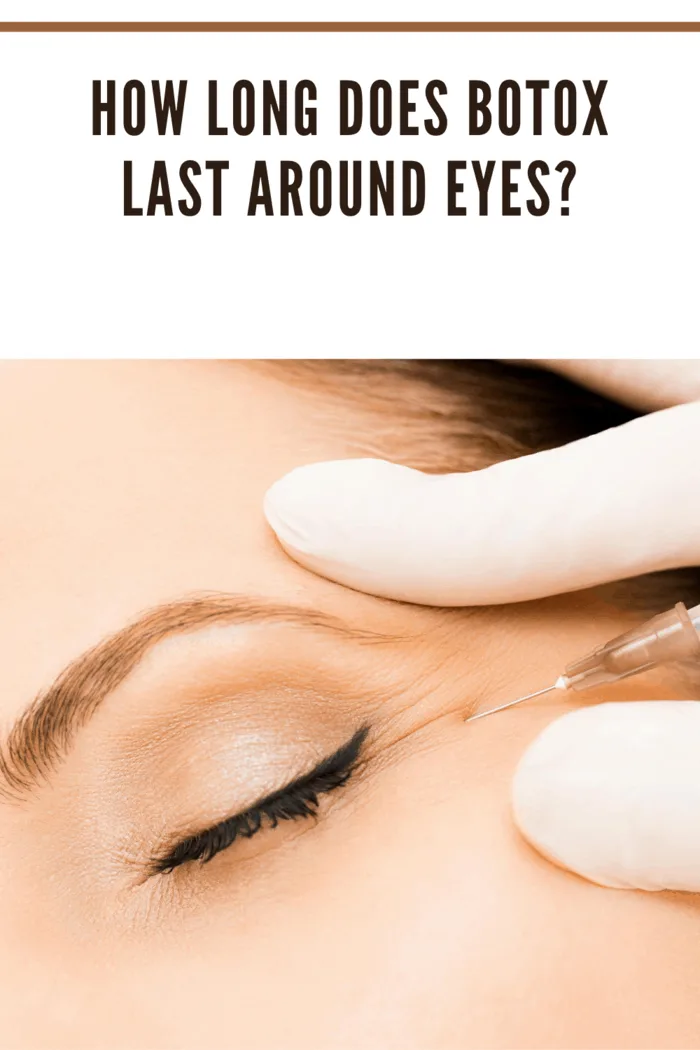Several people who have considered wealth have resorted to cosmetic means to amplify or improve their physical traits. One of these methods involves using botulinum toxin, also known as Botox. It is a neurotoxin mixed with different compounds designed for use by the medical industry.
Duration of Botox Around the Eyes
Botox is a neurotoxin mixed with sodium chloride and human albumin to be compatible with intra-personnel applications. It was initially pioneered by an ophthalmologist named Alan Scott to test a theoretical experiment to treat his patients with eye spasm disorder. A decade later, Allergan bought the rights for its distribution, which has found a popular demand with injections targeting particular eye muscles, the forehead, facial muscles, and fixing several health conditions.
If Botox is injected into vital strategic points surrounding eye support and facial muscles, it usually takes three days to take effect. The overall result could last a duration of three to four months. If you are a patient looking for more info on Botox around the eyes, several websites like https://www.myethosspa.com/ have reviews, and medical insights from renowned medical experts are found worldwide. Their compilations could share and offer additional statistical data concerning botox operations.
The modern formula of Botox is derived from the botulinum toxin. A fatal chemical compound excreted by the clostridium botulinum bacteria. Historically, the neurotoxin could cause a deadly disease termed botulism.
The overall mixture of Botox serves to balance the functions of the neurotoxin. It works to disrupt the nerves, which sends signals to the brain to stimulate muscle contractions. This process of the toxin is the sole reason patients who experience difficulties after a botox procedure are advised to wait a total of twelve weeks.

Where in the Eye Muscles is Botox Injected?
During an operation where Botox is applied, the specialist on-site will inject it on the frown lines beneath both eyes. This area is known as the glabellar lines. Other locations surrounding the eyes may indicate injections of the substance into the forehead, and commonly at the crow’s feet, the outer sides of both eyes.
Applications of Botox
Apart from its primary designated function to fix eye muscle disorders, the formula of Botox can also be applied to other muscle groups. The Federal Drug Administration has already tested the healing potential of the botulinum toxin with its clinical trials and has approved it for various uses. The formula of Botox injections is carefully prepared for any miscalculation with its mixing, or an overdose of the substance can cause the onset of severe and fatal diseases.
Medical Applications
Botox was intended initially for eye disorders but was further developed to treat other health conditions. A syringe amount shot of botox measured in units is gradually delivered into the system of a patient. These injections could assist them in curing diseases such as:
Blepharospasm
Blepharospasm is the chronic medical ailment of uncontrolled blinking performed by both eye shutters.
Hyperhidrosis
Hyperhidrosis is the consistent sweat output produced by the human body even in long durations of stagnation.
Cervical Dystonia
A nervous system disorder that causes muscle spasms concentrated on the neck and shoulders.
Strabismus
Strabismus is a medical health complex where both eyes point in different directions.
Bladder Dysfunction
Bladder Dysfunction or overactive bladder is a defect of the human urinary system where it produces consistent amounts of uncontrolled urination.
Lazy Eye
Lazy Eye connotes the imbalance of both eye muscles responsible for their correct positioning.
Cosmetics
Botox has gained worldwide popularity in the field of cosmetics. Wealthy individuals such as celebrities, business people, artists, and internet figures have resorted to the ability of botox injections to fix physical traits they are unhappy with. Primarily intended for eye spasms and facial muscles, botox can also be injected into other parts of the human body.
Eyebrow Wrinkles
Glabellar Lines
Forehead Wrinkles
Elevens
The common area for botox injections.
Horizontal Creases
Beneath the Cheekbones
Corners of the Mouth
Cobblestone
The patch of skin covers the human chin.
Conclusion
Botox could last a duration of three to four months after input.
It usually takes two to three days up to a week for effects to be noticed.
Botox works to prevent the muscles from performing further movement, causing them to remain stagnant or immovable.
